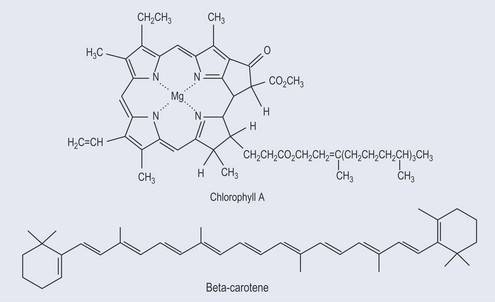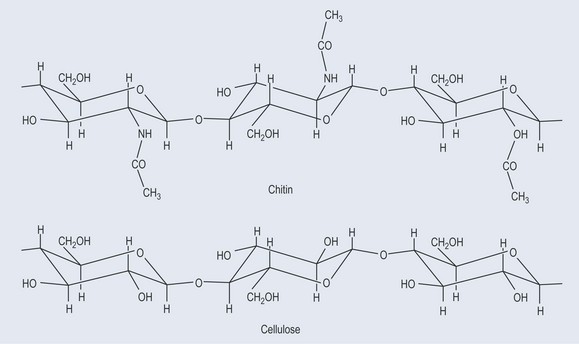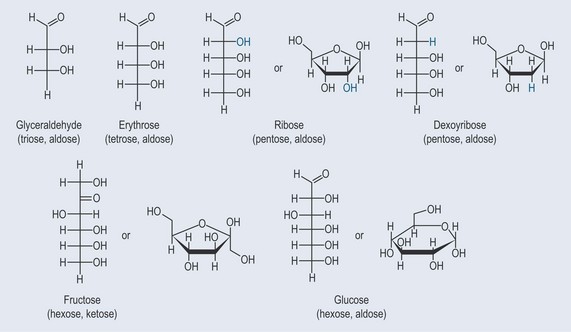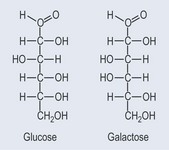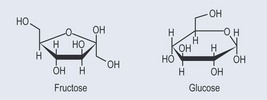Chapter 9 Carbohydrates
Plant Metabolism
Two systems are at work in a plant:
Photosynthesis is the means by which plants use sunlight to produce sugar. Through various chemical reactions in the plant, this ultimately produces energy that the plant can use. Structures called chloroplasts, which are present in the leaves, enable plants to absorb light. The chloroplasts contain photosynthetic pigments called chlorophylls; chlorophyll A is the main photosynthetic pigment in all organisms except bacteria. Combinations of pigments in the plant increase the spectrum of light that plants can absorb for photosynthesis. Carotenoids (Figure 9.1; see Chapter 22 ‘Terpenes’, p. 173) help to transfer this energy. Carbon dioxide and water combine to create chemical energy that can be stored.
Function of Carbohydrates
Monosaccharides
Monosaccharides are the simplest form of sugar. They have more than one hydroxyl group and are based on a backbone of 3, 4, 5; or 6 carbons (triose, tetrose, pentose, or hexose, respectively). Figure 9.2 demonstrates the varieties of sugars of different numbers of carbons:
General Characteristics of Simple Sugars
Stay updated, free articles. Join our Telegram channel

Full access? Get Clinical Tree


